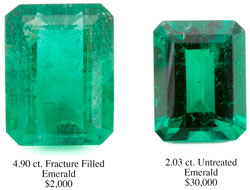Moral Hazards on the rise
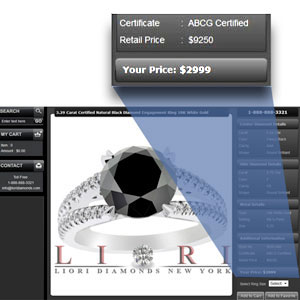 Inflated appraisals, a persistent problem, have now become grossly inflated appraisals. Bogus gem labs proliferate. Markets for gems and precious metals fluctuate. And bargain enthusiasm often runs free of comparison shopping.
Inflated appraisals, a persistent problem, have now become grossly inflated appraisals. Bogus gem labs proliferate. Markets for gems and precious metals fluctuate. And bargain enthusiasm often runs free of comparison shopping.
It is the insurer's responsibility to reduce moral hazard.
Here are a few situations where jewelry owners may be tempted to recoup their losses, or turn a profit, via an insurance claim.
Ship of the fooled
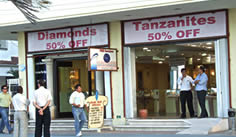 People tend to spend freely on vacation. Jewelry retailers at tourist spots and on cruise ships know they can inflate quality and valuation with no repercussions. Customers on holiday have probably done no comparison shopping. Or if they have, it was at stores with a common ownership, stores owned by the same company but operating under different names. (Cruise destinations and shopping malls are filled with such stores!)
People tend to spend freely on vacation. Jewelry retailers at tourist spots and on cruise ships know they can inflate quality and valuation with no repercussions. Customers on holiday have probably done no comparison shopping. Or if they have, it was at stores with a common ownership, stores owned by the same company but operating under different names. (Cruise destinations and shopping malls are filled with such stores!)
The typical vacationer won't be able to get an independent appraisal before leaving town, and he cannot rely on the ethics or reputation of a retailer unknown to him. If a problem arises later, the customer has little recourse—the seller is far away, or may have relocated, or maybe there's not even a phone number on the receipt. Danger: Moral Hazard
Prevention: For vacation jewelry, require an appraisal from a qualified gemologist before insuring. You want to base insurance on the jewelry's true quality and value, not on a sales pitch. (See below for proper appraisals and appraiser qualifications.)
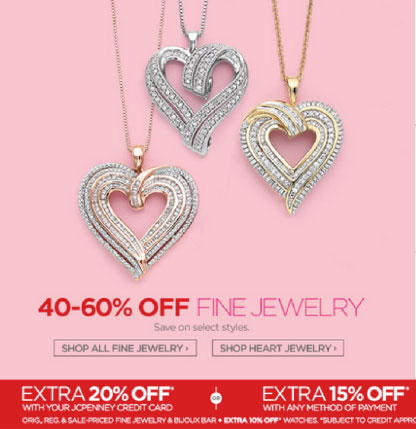 The rush to buy
The rush to buy
TV shopping channels and online auctions pressure potential customers to ACT NOW! in order to get the best price. These promotions usually leave out crucial quality information, even in the documents they supply to the customer. The customer may believe those claims of "60% off" the regular selling price, but the insurer should not! Danger: Moral Hazard
Prevention: Before insuring jewelry purchased online, from a TV shopping channel, at a flea market, or from any other non-standard jewelry retailer, ask for an appraisal from a qualified gemologist appraiser.
Certs
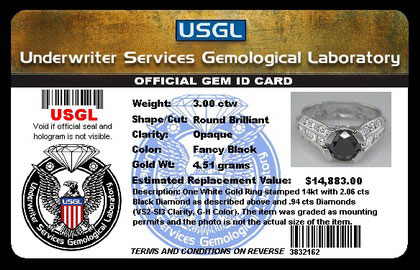 Most retailers these days claim their stones are "certified," but that term is meaningless. The lab reports or other documents that accompany purchases may come from notoriously unreliable labs, unknown labs, or even bogus labs with no street address or internet presence. Such documents may exaggerate the jewelry's quality and list a value far higher than the selling price, but these docs are just sales tools to excite buyers. Danger: Moral Hazard
Most retailers these days claim their stones are "certified," but that term is meaningless. The lab reports or other documents that accompany purchases may come from notoriously unreliable labs, unknown labs, or even bogus labs with no street address or internet presence. Such documents may exaggerate the jewelry's quality and list a value far higher than the selling price, but these docs are just sales tools to excite buyers. Danger: Moral Hazard
Prevention: Rely only on reports from the following respected labs. Also: when you receive a report from one of these labs, you can use these links to verify the authenticity of the report.
GIA
AGL
Gübelin
GCAL Certificate Search
AGS Report VerificationNOTE, however, that even reputable labs offer various reports at different prices: the more information that's included, the higher the report's price. A retailer who gives a lab report with each purchase is likely to choose a less expensive, less complete, version. To be most useful, the insurer should have the lab's top-of-the-line report.
The shifting market
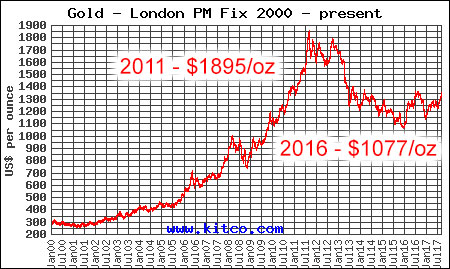
For a while the price of gold rose steadily, making gold a good investment. But around 2013 it began to fall. Gold jewelry purchased at gold's peak would have a lower value a few years later. Such fluctuations are also found in the diamond market. If the jewelry owner follows the market, he might decide at some point it would be profitable to "lose" that ring. Danger: Moral Hazard
Prevention: Require valuation updates every couple of years (and adjust premiums accordingly).
Appraisal from the seller
Many jewelry retailers give customers an appraisal written by the store's owner or employee, or by an appraiser contracted with the store, such as one who sets up in the store on a store-sponsored appraisal day. Such an appraisal and valuation should not be taken at face value, since we would expect a store-supplied document to substantiate what the seller said about the jewelry. Also, brick-and-mortar stores may deliberately omit quality information that would lower the valuation of the jewelry, so they can compete with low prices offered by online sellers. In many cases, the appraised valuation is significantly higher than what the customer pays. Danger: Moral Hazard
Prevention: Ask the insured for an appraisal from an appraiser independent of the seller (which also means: one not recommended or sponsored by the seller). Also, ask for the sales receipt, as the jewelry's selling price is generally a more accurate reflection of its value.
What is that gem, really?
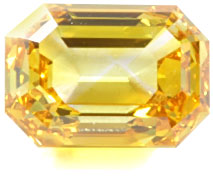
Color treatment means a huge value difference
Was it made in a lab, rather than mined? Is it fracture-filled? Is it color-treated? Is it cut to poor proportions? What is the weight of gold jewelry? What is its karatage? Each of these factors will significantly affect jewelry's value. If such details are not disclosed on the appraisal, the jewelry may have a valuation significantly higher than it's true worth. Danger: Moral Hazard
Prevention: Require a detailed appraisal from a qualified gemologist appraiser.
Appraisals and Appraiser Credentials
The best appraisal includes the JISO 78/79 appraisal form, and is written by a qualified gemologist (GG, FGA+, or equivalent) who has additional insurance appraisal training. One course offering such additional training is the Certified Insurance Appraiser™ (CIA) course of the Jewelry Insurance Appraisal Institute.
The JISO (formerly ACORD) standards are designed to protect insurers from jewelry insurance fraud. If the appraiser is not a GG and CIA, at least require JISO 806, Jewelry Document for Insurance Purposes, which can be completed by any appraiser. Then score the appraisal for insurance to value (ITV), to verify that the stated valuation is reasonable.
FOR AGENTS & UNDERWRITERS
Always ask for the sales receipt. If there is a large discrepancy between the purchase price and the appraised valuation, the purchase price is usually a more accurate indication of value.
We cannot emphasize strongly enough the need to check appraisals and lab reports for information about gem treatments. Look for these terms: treated, enhanced, composite, fracture-filled. A color-treated or clarity-treated gem has a lower value than an untreated gem of similar appearance.
If there are no treatments, the appraisal should explicitly state that the stone is untreated. This lets you know the appraiser has made a determination and not simply overlooked or avoided the issue of treatments.
Also look for terms that denote lab-made stones, such as: grown, lab-grown, synthesized, man-made. Lab-made diamonds are real diamond, but they have a lower valuation that mined diamonds.
All jewelry of substantial value should have a report from one of these reliable labs. Use these links to check the authenticity of reports you receive.
GIA
AGL
Gübelin
GCAL Certificate Search
AGS Report Verifcation
FOR ADJUSTERS
Be aware of metal and gem market fluctuations. Settlement is based on valuation at time of loss.
Check all documents for terms indicating lab-made stones or terms describing gem treatments.
©2000-2025, JCRS Inland Marine Solutions, Inc. All Rights Reserved. www.jcrs.com

Prevention: Require valuation updates every couple of years (and adjust premiums accordingly).
Prevention: Ask the insured for an appraisal from an appraiser independent of the seller (which also means: one not recommended or sponsored by the seller). Also, ask for the sales receipt, as the jewelry's selling price is generally a more accurate reflection of its value.
 Color treatment means a huge value difference |
Was it made in a lab, rather than mined? Is it fracture-filled? Is it color-treated? Is it cut to poor proportions? What is the weight of gold jewelry? What is its karatage? Each of these factors will significantly affect jewelry's value. If such details are not disclosed on the appraisal, the jewelry may have a valuation significantly higher than it's true worth. Danger: Moral Hazard
Prevention: Require a detailed appraisal from a qualified gemologist appraiser.
Appraisals and Appraiser Credentials
The best appraisal includes the JISO 78/79 appraisal form, and is written by a qualified gemologist (GG, FGA+, or equivalent) who has additional insurance appraisal training. One course offering such additional training is the Certified Insurance Appraiser™ (CIA) course of the Jewelry Insurance Appraisal Institute.
The JISO (formerly ACORD) standards are designed to protect insurers from jewelry insurance fraud. If the appraiser is not a GG and CIA, at least require JISO 806, Jewelry Document for Insurance Purposes, which can be completed by any appraiser. Then score the appraisal for insurance to value (ITV), to verify that the stated valuation is reasonable.
FOR AGENTS & UNDERWRITERS
Always ask for the sales receipt. If there is a large discrepancy between the purchase price and the appraised valuation, the purchase price is usually a more accurate indication of value.
We cannot emphasize strongly enough the need to check appraisals and lab reports for information about gem treatments. Look for these terms: treated, enhanced, composite, fracture-filled. A color-treated or clarity-treated gem has a lower value than an untreated gem of similar appearance.
If there are no treatments, the appraisal should explicitly state that the stone is untreated. This lets you know the appraiser has made a determination and not simply overlooked or avoided the issue of treatments.
Also look for terms that denote lab-made stones, such as: grown, lab-grown, synthesized, man-made. Lab-made diamonds are real diamond, but they have a lower valuation that mined diamonds.
All jewelry of substantial value should have a report from one of these reliable labs. Use these links to check the authenticity of reports you receive.
GIA
AGL
Gübelin
GCAL Certificate Search
AGS Report Verifcation
FOR ADJUSTERS
Be aware of metal and gem market fluctuations. Settlement is based on valuation at time of loss.
Check all documents for terms indicating lab-made stones or terms describing gem treatments.
©2000-2025, JCRS Inland Marine Solutions, Inc. All Rights Reserved. www.jcrs.com

